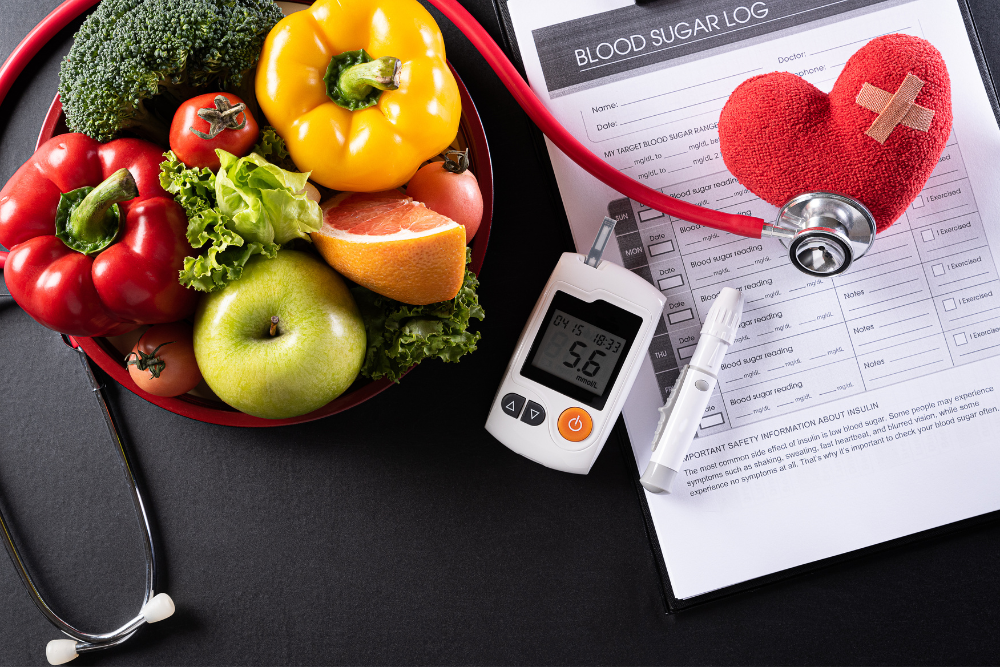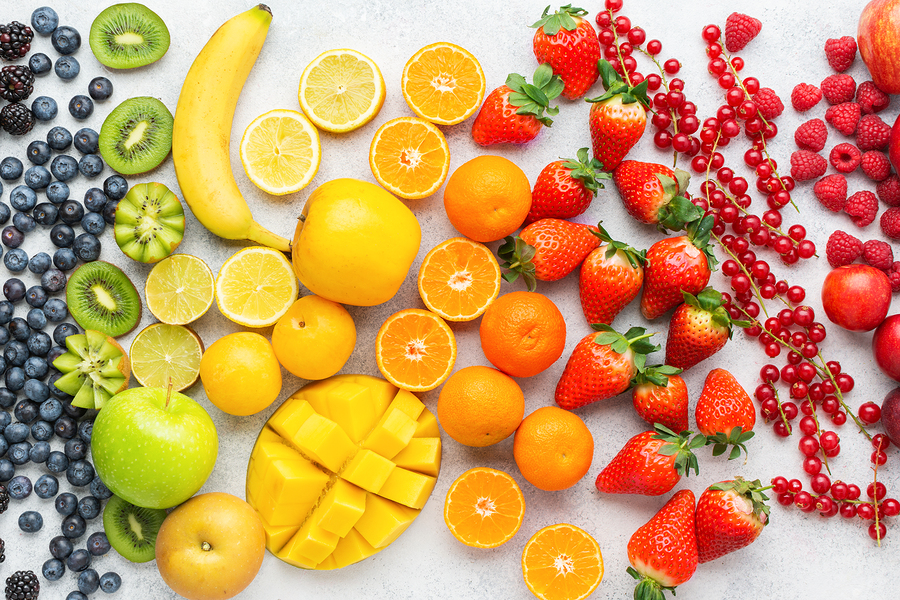An interesting question that people commonly ask about food and nutrition: Is there that much difference between foods grown 30 years ago and foods grown today?
The answer is YES.
Decades ago, conventionally grown fruits and vegetables were much richer in vitamins and minerals than the varieties most of us are consuming in the 21stCentury. The root of the problem is soil depletion, a result of the invasive agricultural processes used on conventional farms. Over the past half century, there are reliable declines in the amount of protein, calcium, phosphorus, iron, vitamin C, and the B vitamins found in produce. But that’s not all that is being depleted in fruit and vegetable crops.
What else is being depleted? Phytonutrients.
Phytonutrients are special plant chemicals that give fruits and veggies their color and are essential to keeping a plant healthy. They protect the plant from invasive pests, exposure to UV radiation, and support growth and maintenance from roots to leaves. Not only are phytonutrients important for plants, they are extremely beneficial to human health.
Phytonutrients have antioxidant and anti-inflammatory properties that help maintain healthy cells in the body. They enhance immunity and intercellular communication, repair cellular damage, help build bones, and support the body’s innate detoxification processes. Additionally, phytonutrients play a role in the health of the major physiological systems. Consuming a diet rich in phytonutrients is regarded by researchers and health practitioners as an effective strategy for reducing risk for cancer, heart disease, and other chronic diseases.
Different types of fruits and vegetables can contain a variety of the more than 900 known phytonutrients. These include flavonoids, carotenoids, lignans, phytosterols, resveratrol, isoflavones, to name a few. Cooking time affects phytonutrient content. Where possible, eat raw produce or use minimal cooking times such as sautéing or steaming, or add veggies and fruits in the final few minutes of other cooking methods.
The bottom line given that phytonutrients are so important for health and that the levels are dropping in foods: eat more veggies and fruits! Be sure and work with your doctor or myself ( Dr. Wendy Wells ) to create an individual plan for you and your family that takes into account nutritional needs, food intolerances and your health plan.
Resources
Davis, D. R. et al., “Changes in USDA Food Composition Data for 43 Garden Crops, 1950 to 1999.” (2004) Jl American College of Nutrition, 23(6) 669–682. Accessed 13 Feb 2020: http://saveoursoils.com/userfiles/downloads/1351255687-Changes%20in%20USDA%20food%20composition%20data%20for%2043%20garden%20crops,%201950-1999.pdf
Scheer, R. & Moss, D. “EarthTalk: Dirt Poor: Have Fruits and Vegetables Become Less Nutritious?” Scientific American Online, (posted 27 April 2011). Accessed 13 Feb 2020″ https://www.scientificamerican.com/article/soil-depletion-and-nutrition-loss/
UCDavis.edu “Nutrition and Health Info Fact Sheet: Phytonutrients” Accessed 13 Feb 2020: https://anrcatalog.ucanr.edu/pdf/8313.pdf
Cao, J. “Phytonutrients are good for bone health.” USDA Agricultural Research Service. Accessed 12 Feb 2020: https://www.ars.usda.gov/plains-area/gfnd/gfhnrc/docs/news-2011/phytonutrients-are-good-for-bone-health
Linus Pauling Micronutrient Information Center. “Phytochemicals.” Accessed 13 Feb 2020: https://lpi.oregonstate.edu/mic/dietary-factors/phytochemicals
Thomasset, S. C. , Berry, D.P. et al. “Dietary polyphenolic phytochemicals-promising cancer chemopreventive agents in humans? A review of their clinical properties.”(2007 Feb 1) Intl. J Cancer (120)3. Accessed 13 Feb 2020: https://onlinelibrary.wiley.com/doi/full/10.1002/ijc.22419
Higdon, J. Blake, V.J. Evidence-Based Approach to Phytochemicals and Other Dietary Factors 2nd Ed. (2013) https://www.worldcat.org/title/evidence-based-approach-to-phytochemicals-and-other-dietary-factors/oclc/827467953
Image link:
https://www.medicinetalkpro.org/pt_newsletter_images/apr2020/Apr20_VS_img.jpg
-
Intravenous Therapy For Nutrition and Hydration

Most of us have heard before that you are what you eat. In some cases, people aren’t able to eat foods in adequate amounts or even at all due to injury or disease. For instance, damage caused to the intestinal tract via Celiac’s, Crohn’s or ulcerative colitis can severely impair the gut’s ability to absorb nutrients. Major burns, acute kidney injuries, or even those who have a chronic alcohol use disorder can benefit from IV therapy. How do you know you have enough nutrients? Our food is not what it used to be. With the onslaught of toxic chemicals, GMO’s, and depleted […]
-
Skip Gatorade, Make Your Own Electrolyte Drink

Why use a commercial electrolyte replacement beverage when you can make your own and know that it will have far greater benefits and less sugar and chemical additives than anything sold in stores? Gatorade has been outlawed in the European Union due to it containing dyes and brominated vegetable oil which are toxic to the body. An electrolyte drink is essential for rehydrating after intense training or competition in the heat, for hydrating a day or two before a sports event, and for preventing or recovering from the dehydration caused by illness. Electrolytes are great for the adrenal glands as […]
-
Sugar, Sugar Everywhere…

How can I eat without sugar? In the United States, sugar is everywhere and in everything. Oftentimes sugar is an added ingredient that just doesn’t make sense. The daily recommendation for sugar intake over 2 years of age is less than 10% of your daily calories. But, it can be found in your breakfast cereal, in your crackers, in your flavored water, and your cup of soup. Sugar has taken over in food production and is a double-edged sword. It may worsen health, but it tastes really good, and sugary foods fly off grocery store shelves. So, this means […]
-
Intravenous Therapy For Nutrition and Hydration
Most of us have heard before that you are what you eat. In some cases, people aren’t able to eat foods in adequate amounts or even at all due to injury or disease. For instance, damage caused to the intestinal tract via Celiac’s, Crohn’s or ulcerative colitis can severely impair the gut’s ability to absorb nutrients. Major burns, acute kidney injuries, or even those who have a chronic alcohol use disorder can benefit from IV therapy. How do you know you have enough nutrients? Our food is not what it used to be. With the onslaught of toxic chemicals, GMO’s, and depleted […]
-
Skip Gatorade, Make Your Own Electrolyte Drink
Why use a commercial electrolyte replacement beverage when you can make your own and know that it will have far greater benefits and less sugar and chemical additives than anything sold in stores? Gatorade has been outlawed in the European Union due to it containing dyes and brominated vegetable oil which are toxic to the body. An electrolyte drink is essential for rehydrating after intense training or competition in the heat, for hydrating a day or two before a sports event, and for preventing or recovering from the dehydration caused by illness. Electrolytes are great for the adrenal glands as […]
-
Sugar, Sugar Everywhere…
How can I eat without sugar? In the United States, sugar is everywhere and in everything. Oftentimes sugar is an added ingredient that just doesn’t make sense. The daily recommendation for sugar intake over 2 years of age is less than 10% of your daily calories. But, it can be found in your breakfast cereal, in your crackers, in your flavored water, and your cup of soup. Sugar has taken over in food production and is a double-edged sword. It may worsen health, but it tastes really good, and sugary foods fly off grocery store shelves. So, this means […]



